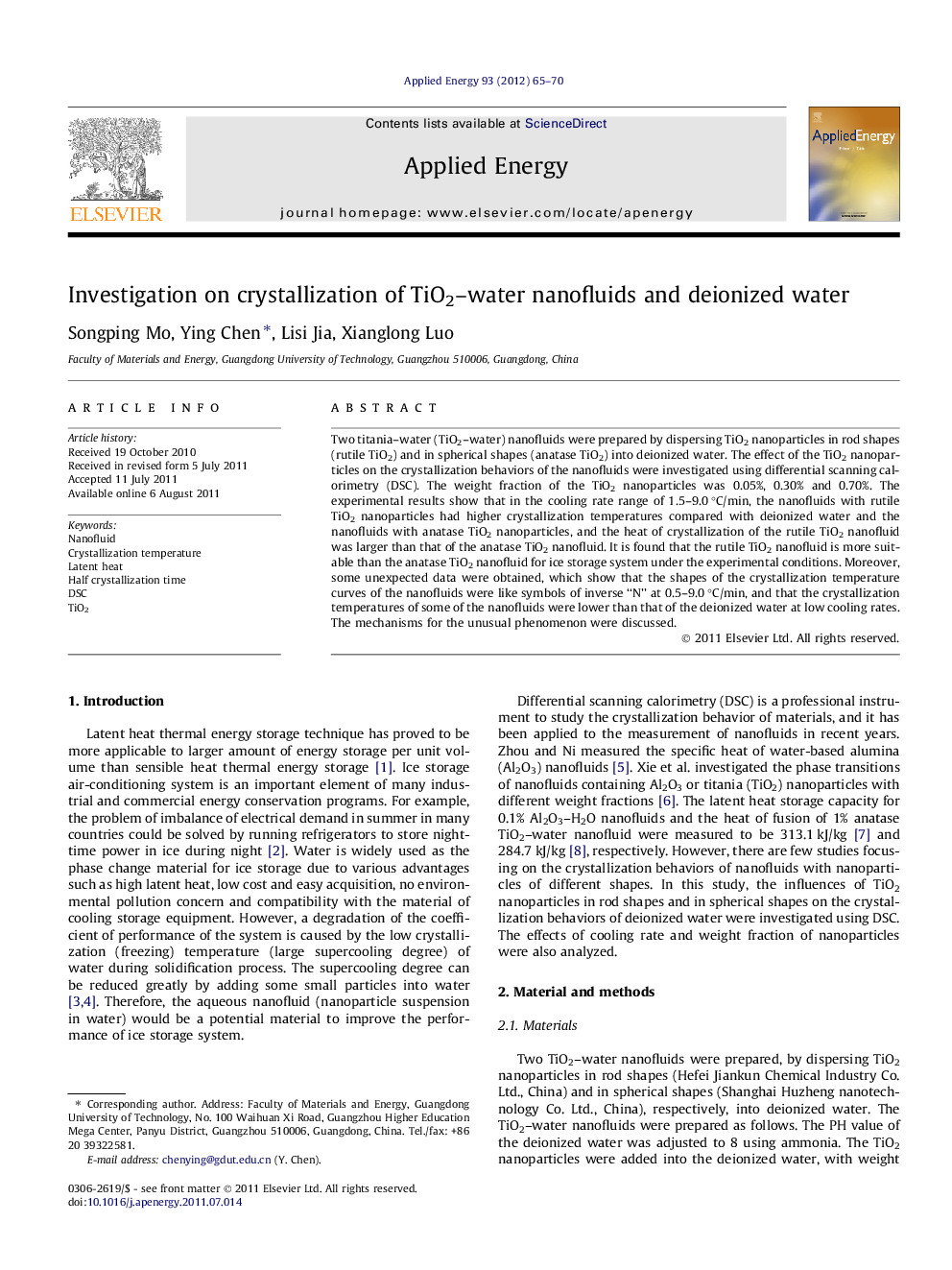| Article ID | Journal | Published Year | Pages | File Type |
|---|---|---|---|---|
| 243307 | Applied Energy | 2012 | 6 Pages |
Two titania–water (TiO2–water) nanofluids were prepared by dispersing TiO2 nanoparticles in rod shapes (rutile TiO2) and in spherical shapes (anatase TiO2) into deionized water. The effect of the TiO2 nanoparticles on the crystallization behaviors of the nanofluids were investigated using differential scanning calorimetry (DSC). The weight fraction of the TiO2 nanoparticles was 0.05%, 0.30% and 0.70%. The experimental results show that in the cooling rate range of 1.5–9.0 °C/min, the nanofluids with rutile TiO2 nanoparticles had higher crystallization temperatures compared with deionized water and the nanofluids with anatase TiO2 nanoparticles, and the heat of crystallization of the rutile TiO2 nanofluid was larger than that of the anatase TiO2 nanofluid. It is found that the rutile TiO2 nanofluid is more suitable than the anatase TiO2 nanofluid for ice storage system under the experimental conditions. Moreover, some unexpected data were obtained, which show that the shapes of the crystallization temperature curves of the nanofluids were like symbols of inverse “N” at 0.5–9.0 °C/min, and that the crystallization temperatures of some of the nanofluids were lower than that of the deionized water at low cooling rates. The mechanisms for the unusual phenomenon were discussed.
► Crystallization behaviors of TiO2–water nanofluids and water were investigated. ► Two crystallization mechanisms for TiO2–water nanofluids and water are proposed. ► Effects of rod shape and spherical shape nanoparticles on nucleation were compared. ► Rod shape TiO2 nanoparticles had more significant effect on nucleation behavior. ► Nanofluid with rod shape TiO2 nanoparticles is more suitable for ice storage system.
